This is a lengthy post, so TL;DR - I feel it is important to not just take pretty pictures of wildlife, but to try to identify them, and then to make the effort to send the informaton to the relevant recording scheme. This can help organisations keep tabs on the state of wildlife in their area, and improve the way they manage the local enviroment for the benefit of the natural world.
For more detail check out the rest of the article...
So as you can tell by now, I enjoy photography, and I like insects which means I enjoy taking taking pictures of insects (and any other wildlife of course). But for me, there is more to it than just taking pretty pictures. I want to learn about them. I want to understand their life-cycle and their behaviour, and what type of invertebrate they are.
But most importantly I want to know their name!
Is it a Beetle or a Bug? There is a difference! What type of Spider is it? Is it a Wolf Spider or an Orb-web Spider? Is it a type of Social Wasp or a Solitary Wasp? Same goes for bigger animals, when I take pictures of Birds, I want to know what species it is.
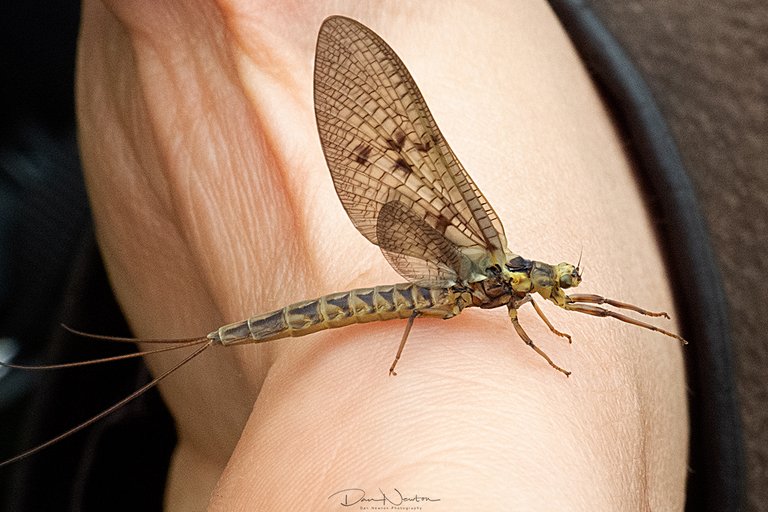
Mayfly - Ephemera danica
So many questions. Fortunately there is a wealth of info online, and lots of good books available to help us identify the insect (or mammal or bird etc) in front of us. It can be difficult at times, but spending a bit of time researching can help narrow down the search to a group of insects. For example Weevils and Fireflies are both types of Beetle, but they are very different.
I often use Facebook groups to confirm IDs of the insects in my photos. There are some very knowledgeable people on there, and it is the best things about social media: a very easy way to connect and share knowledge.
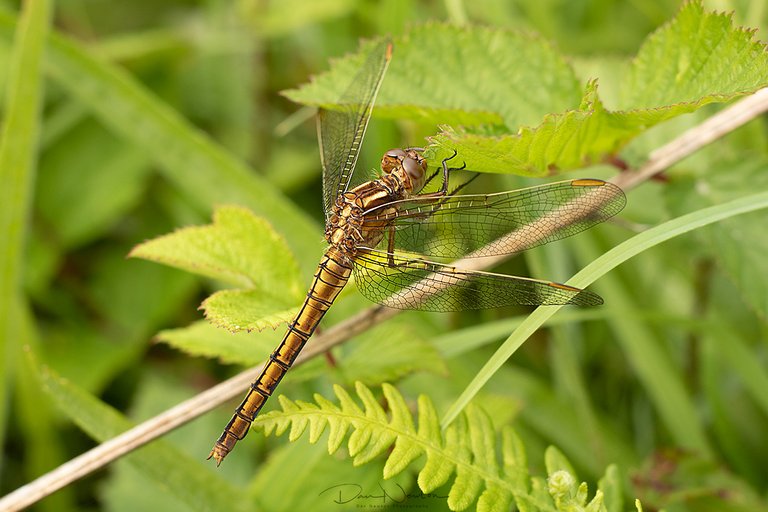
Keeled Skimmer Dragonfly - Orthetrum coerulescens
Once armed with the knowledge what happens next? Why, tell somebody of course! What is the point doing all the hard of identify an particular species, and then leaving the information to gather dust.
I send details of what I see in the moth trap to the local moth recorder. There are Recording Schemes run by experts and enthusiasts, who focus on particular groups such as Hoverflies, Beetles, Spiders and Bees and Wasps, and I send in my sightings to the relevant groups. And I can also upload sightings to iRecord, which is an online database allowing individuals to upload images, and the relevant experts to confirm records. [see Note 1 below]
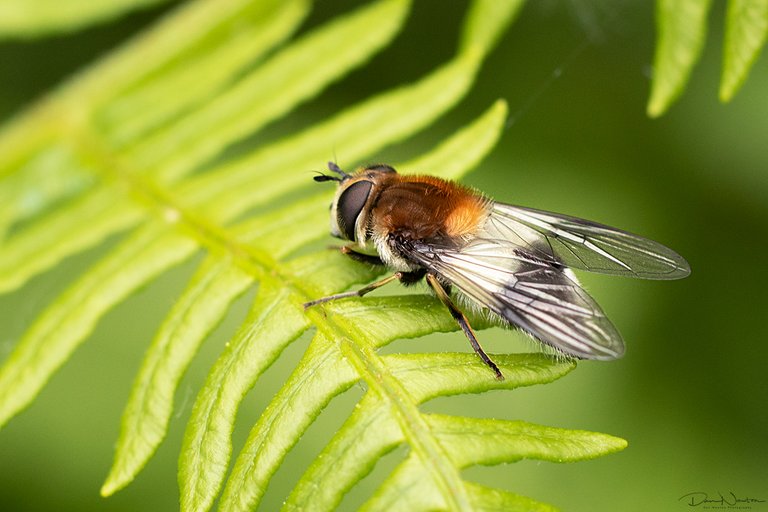
Hoverfly - Leucozana lucorum
But why go to the effort to record anything? What is the point?
The records that I, and lots of other people, send in can help to build up a picture of the current state of the Natural World. We can see where certain species are common or uncommon, which ones are doing well, and can highlight any species that could be declining. We can also see how populations can vary over the course of the year, and by incorporating data from other sources, we can begin to understand the requirements of species such as the proper management of their habitats. This in turn can help conserve (protect and look after) different species.
But all that good work, all comes down to a few people making notes, and some others interpreting what has been recorded.
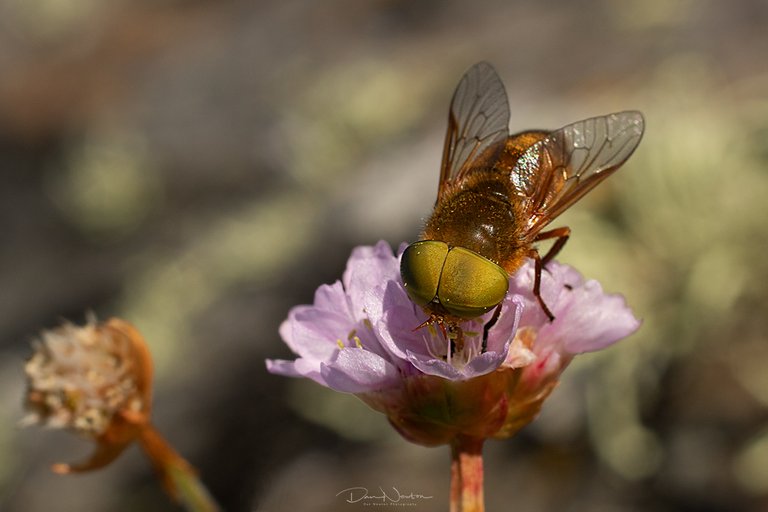
Golden Horsefly - Atylotus fulvus
It is important to realise that any conservation project that is created to help protect species, whether that is the Ladybird spider, or the Bittern, or the Red Squirrel or even the Tigers in India, ALL rely on data recorded by individuals who enjoy wildlife. And it all comes down to not just going out for a walk to get some fresh air or to enjoy the sun, but to actively pay attention to what is going on around us.
There loads of ways you can do this. You can make regular visits to a ‘local patch’ which is a term which means a place you often visit. You can make notes on what birds visit your garden. You can take part in events such as the Butterfly Conservation’s Big Butterfly Count or the RSPB’s Garden Bird Watch. You can specialise in a favourite group of animals (birds, butterflies or bees) or you can choose to record a bit of everything.
If you made it to the end then thanks for reading. I may have started rambling a bit, but hopefully you found it interesting. If you have any comments or questions feel free to get in touch and I’ll do my best to answer them
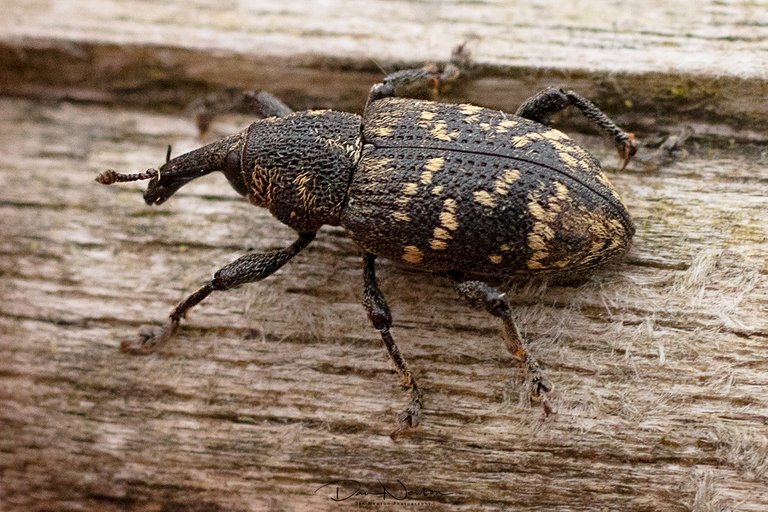
Pine Weevil - Hylobius abietis
Note 1 - I realise that all the above info is relevant only to the UK. All of you living in other parts of the world will have different systems in place to record wildlife, and unfortunately not everywhere is as organised or as well set-up as the UK.
Note 2 - It is worth bearing in mind that sometimes it is really hard to ID some species of insects from photographs. Sometimes the picture is not clear or detailed enough, or it is showing the wrong angle. In these cases a specimen is needed and placed under a microscope to get the full ID. This isn't always possible so sometimes the ID can not go further than Genus levle (such as Cynips sp in the image below. This means that the recorder wasn't confident of the precise ID, but was sure it was a type of Gall Wasp
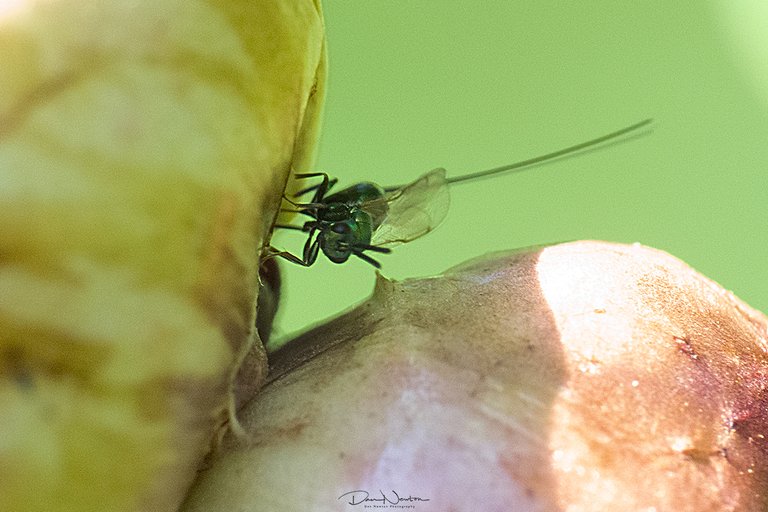
Gall Wasp species - Cynips sp
Record keeping is of the utmost importance for conservation in wildlife, movement of insects, birds and plants, there are places to share and document findings. Good to remember and a reminder to update every so often.
Wonderful photography on all the insects you have seen and named.
!tip
Agreed, thanks for the comment and the tip!
Thats an amazing post and a great intention behind it ^^ .. Thats for sure something tha DNA will fall in love with ;)
Thank you for the kind words, Im pleased to hear that other people appreciate and agree with my ideas.
Congratulations @dannewton! You have completed the following achievement on the Hive blockchain and have been rewarded with new badge(s) :
You can view your badges on your board And compare to others on the Ranking
If you no longer want to receive notifications, reply to this comment with the word
STOPSupport the HiveBuzz project. Vote for our proposal!
Nice :-)
Thanks for posting quality posts! Nature is beautiful and we must take care of it and study it. I have voted and shared your post😃
I have started a proposal in favor of science and nature in Hive proposals🐬 Please consider supporting my project if you wish.
You can vote for my proposal here:
https://hivedao.com/proposals(#120)
https://peakd.com/me/proposals/120
sorry @juanbg, i have only just found this comment. Thank you for sharing my post... and yes I have voted for your proposal :-)
Don't worry @dannewton thanks a lot for your vote!😀
🎁 Hi @dannewton! You have received 0.1 HIVE tip from @joanstewart!
@joanstewart wrote lately about: Birds Are Not On Lockdown Feel free to follow @joanstewart if you like it :)
Sending tips with @tipU - how to guide.